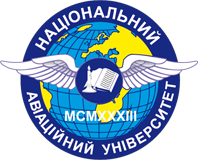EXPERIENCE IN APPLYING MACHINE LEARNING IN THE AUTHENTICATION AND ATTRIBUTION PROCESS OF KAZIMIR MALEVICH'S WORKS
DOI:
https://doi.org/10.32782/uad.2024.3.7Keywords:
Kazimir Malevich, authentication, attribution, machine learning, art expertise, technical and technological analysis.Abstract
The article explores the application of machine learning technologies for the authentication and attribution of works by Kazimir Malevich, one of the most renowned avant-garde artists. Special attention is given to the necessity of introducing innovative approaches in art expertise, which is becoming increasingly relevant due to the complexity of identifying and verifying the authenticity of artworks. It is emphasized that traditional methods do not always provide the required level of accuracy, whereas the use of machine learning algorithms allows for a significant increase in the efficiency of these processes by automating the collection, processing, and analysis of large volumes of data. Various methods of technical and technological analysis are considered, including optical microscopy, ultraviolet and infrared spectroscopy, as well as X-ray fluorescence analysis, which are key tools for studying the technical characteristics of Malevich's paintings. These methods, in combination with machine learning, enable the detection of stylistic features and technical details that are critical for the accurate attribution of artworks. Using Malevich's works, such as "Winter Landscape" and "Summer Landscape," as examples, it is demonstrated how machine learning can aid in identifying unique stylistic traits, which are essential for accurate authorship determination. The article also highlights the importance of integrating various data sources to create a more comprehensive and reliable picture of artistic works. It is noted that the use of machine learning in art expertise opens up new possibilities for identifying forgeries and establishing the precise provenance of artworks, which is particularly relevant in the context of the modern art market, where the number of forgeries is increasing. In the future, such technologies have the potential to become the standard in the field of art history, contributing not only to the improvement of research accuracy but also to a significant reduction in the risk of errors, making them indispensable in contemporary conditions where scientific precision and objectivity are decisive factors.
References
Schaer L., Postma E., Popovici C. Art authentication with vision transformers, Neural Computing and Applications. 2024. 36: 11849–11858.
Bell P., Offert F. Reflections on connoisseurship and computer vision. Journal of Art Historiography. (24). 2021.
Qi H., Taeb A., Hughes S.M. Visual stylometry using background selection and wavelet-HMT-based Fisher informa-tion distances for attribution and dating of impressionist paint-ings. Signal Process. 2013. 93(3): 541–553.
Liu H., Chan R.H., Yao Y. Geometric tight frame based stylometry for art authentication of van gogh paintings. ApplComput Harmon Anal. 2016. 41(2): 590–602.
Lyu S., Rockmore D., Farid H. A digital technique for art authentication. In: Proceedings of the National Academy of the U.S.A. 2004. 101(49), pp. 17006–17010.
Hughes JM., Graham DJ., Rockmore DN. Quantification of artistic style through sparse coding analysis in the drawings ofPieter Bruegel the Elder. Proc Natl Acad Sci. 2010. 107(4): 1279–1283.
Liu Z., Lin Y., Cao Y., Hu H., Wei Y., Zhang Z., Lin S., Guo B. Swin transformer: hierarchical vision transformer using shifted windows. In: Proceedings of the IEEE/CVF international conference on computer vision (ICCV). 2021.
Krizhevsky A., Sutskever I., Hinton GE. Imagenet classi-fication with deep convolutional neural networks. Commun ACM. 60 (6): 84–90.
Салата O. (2021). Казимир Малевич в авангардних дискусіях 1928-1930 років. Київські історичні студії, 2017. 2 (13). С. 36–41.
Markade J.-C. «Жіночий торс №1» Малевича: прообраз нової постсупрематичної іконності. 2020. URL: https://www.vania-marcade.com/%D0%B6%D0%B5%D0%BD%D1%81%D0%BA%D0%B8%D0%B9-%D1%82%D0%BE%D1%80%D1%81-%E2%84%96-1-%D0%BC%D0%B0%D0%BB%D0%B5%D0%B2%D0%B8%D1%87%D0%B0-%D0%BF%D1%80%D0%BE%D0%BE%D0%B1%D1%80%D0%
B0%D0%B7-%D0%BD%D0%BE/
Postma EO., Herik HJvd. Discovering the visual signature of painters. Future directions for intelligent systems and infor-mation sciences. The future of speech and image technologies,brain computers, WWW, and Bioinformatics. Springer, Heidelberg, 2000. pp. 129–147.
Drutt M. Kazimir Malevich: Suprematism. Guggenheim Museum Publications. 2003.
Liu Z., Hu H., Lin Y., Yao Z., Xie Z., Wei Y., Ning J., Cao Y., Zhang Z., Dong L., Wei F., Guo B. Swin transformer v2: scaling up capacity and resolution. In: CVPR 2022.
Zhu Y., Ji Y., Zhang Y., Xu L., Zhou AL., Chan E. Machine: the new art connoisseur. arXiv preprint arXiv:1911.10091. 2019.








